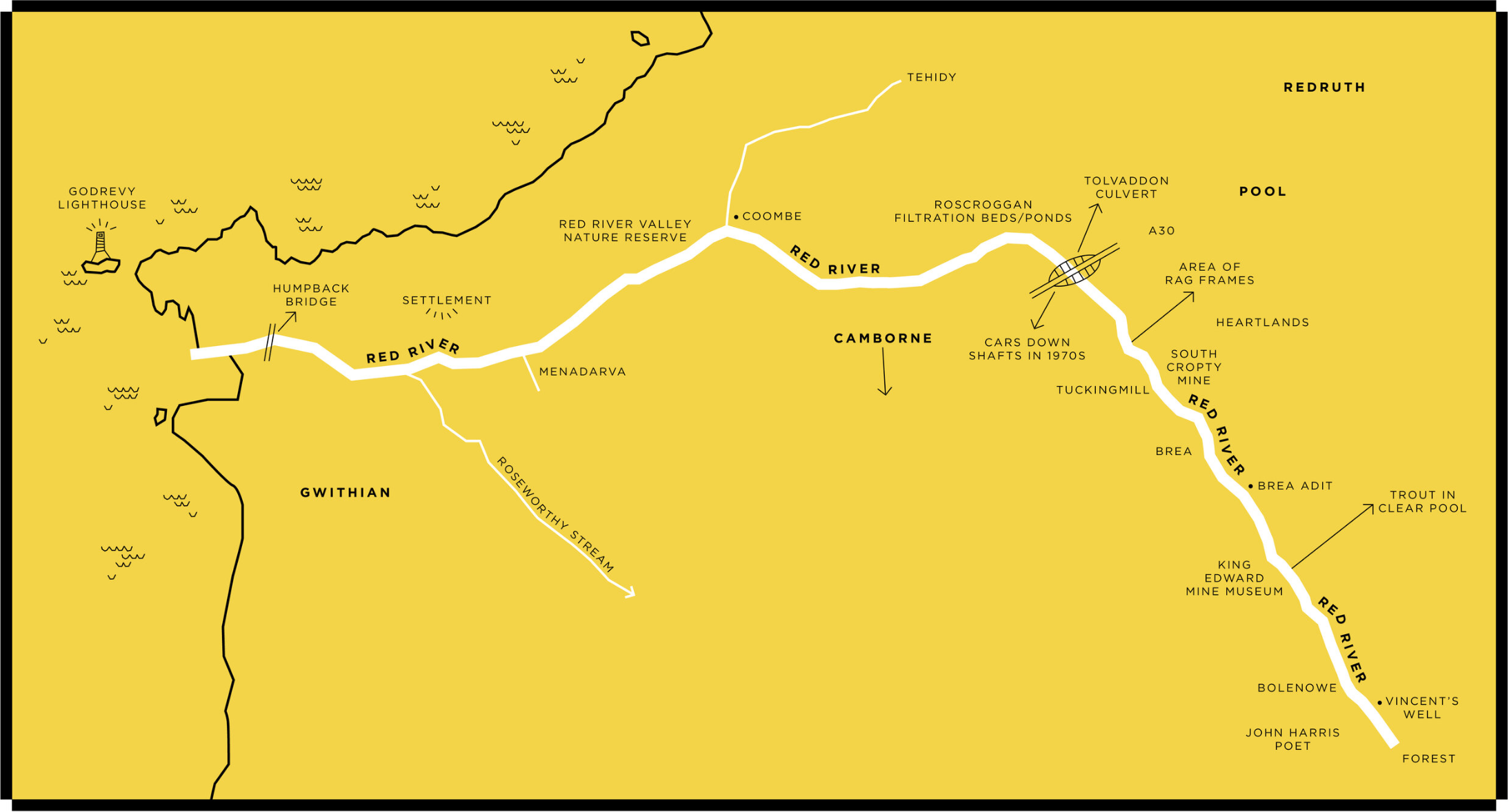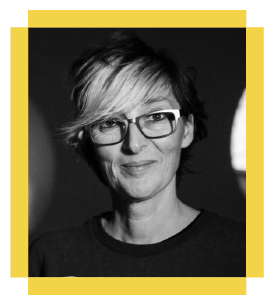ABOUT
Red River: Listening to a Polluted River was an 18 month research project funded by the Arts and Humanities Research Council through their Leadership Fellowship scheme, and led by Dr John Wedgwood Clarke of the University of Exeter. It explored how creative writing can transform our relationship to a polluted, post-industrial river through listening to the human and non-human voices that have shaped, and continue to shape, its course.
Working with schools, community action groups, artists, scientists, curators, geographers—anyone interested in either the Red River or creative writing—the project sought to enhance participants’ sense of the complex impact of human activity on the ecology of this small post-industrial river.
This was enabled through a series of creative workshops and events, and by making new work in a variety of art-forms that responded to what the river reveals about us. It led to the creation of creative-writing resources for schools and adults interested in writing about rivers and ecology; a new long poem for the Red River; a BBC FOUR documentary; a sound-and-text artwork performed at Tate St Ives; a film; and a number of brilliant new commissions by contemporary artists. All the works produced for the project are available on this website.

Image courtesy of Harvey Gorst
THE RED RIVER
If you don’t know the Red River—and it’s not on the usual map of West Cornwall tourist destinations—it rises among neolithic standing stones on the moors above Camborne and flows through a valley that has been worked for tin since at least Roman times, finally emerging into the clear waters of St Ives Bay at Gwithian.
Although only 7.5miles in length, and little more than a stream, it passes through a remarkably diverse physical and cultural landscape. Given its centrality to the Industrial Revolution in Cornwall, and the development of hard-rock mining around the world—it flows through part of a UNESCO World Heritage mining site—the Red River’s sediments are rich in stories and ecology that reveal the human and non-human legacies of heavy industry. It even contains a unique sub-species of trout that has evolved to live in its polluted water, a life form that may be considered as much an artifact of tin-mining as the Cornish engine-houses on the slopes around its banks: mining is in its genes.
The combination of ancient landscape use, post-industrial economic deprivation, EU-funded environmental remediation, and the continuing growth in high-end tourism based on the image of Cornwall as a Romantic, rugged elsewhere, make the Red River an exciting site through which to question what is wild and what is natural, beautiful and ugly, rubbish and valuable. We have many great poems about beautiful rivers, but fewer about the polluted, post-industrial and ugly. This research project has tried to put that right. It borrowed the ecological concept of the 'ecotone', or meeting place of biomes, both to read the marginal environments of the Red River, and as a metaphor for the way creative processes were altered when they touched, entered and met the river on its own strange terms.

Red River Culvert: Camborne-Redruth Bypass construction, 1973. Image courtesy of Kresen Kernow. REF: corn02969
A local river with a global influencE
It may be small, but it’s travelled far: the Red River’s been at the heart of a local mining industry that’s exported techniques, equipment and people around the globe. Pumps, drills, acid mine waste, dynamite fuses— the message of the Red River coursing through mouths and hands of the Cornish diaspora has enriched and ruined landscapes all over the world.
Our Red River feeds into all red rivers.

Image courtesy of Jasper Fell-Clark
Why we did this
Poetry can make the overlooked special through naming it. The Red River may be small and sometimes ‘ugly’, but it’s as meaningful as any great river. Our lives are in its sediments and the organisms that have adapted to live in it; our ideas have exploited its energy — we need to listen to what it tells us about our species.
It’s been a place for waste, now people are valuing it again. Poetry can help through finding words that let us see its damage differently. And poetry needs to do this with those who live by the river, for those who visit, and those who want to learn about our environmental impact.
The Red River tells us about what we value and about the invisible relationship between the human and the natural world. Through a series of creative workshops and events we brought together people interested in the Red River to explore its past, present condition, and imagine its future.

Image courtesy of Jasper Fell-Clark
WHO WE ARE
Dr John Wedgwood Clarke—Poet and Project Lead / AHRC Leadership Fellow
The project was directed by the poet and academic Dr John Wedgwood Clarke, Senior Lecturer in Creative Writing at the University of Exeter.
John was born in Penzance and grew up in St Ives and Carbis Bay. He went to the Humphry Davy School and Penzance Sixth Form College. As a teenager, he surfed in the rust-red waves at the mouth of the Red River.
He has published two collections of poetry, Ghost Pot (2013), and Landfill (2017), which explores the poetics of rubbish and marine ecology. John regularly collaborates with scientists, educationalists, and other artists on cross-disciplinary projects with a strong participatory element, working with both schools and groups outside formal education.
More information here
Rob Mackay—sound artist
Rob Mackay is a composer, sound artist and performer. He is currently a Reader in Composition and Sound Art at the University of Hull.
Recent projects have moved towards a cross-disciplinary approach, soundscape ecology, audiovisual installation work, and human-computer interaction. His work has been performed in 18 countries (including broadcasts on BBC Radio 3, BBC Radio 1 and Radio France), and a number of his pieces have received international awards (Bourges, Hungarian Radio, La Muse en Circuit). He has held composer residencies at Slovak Radio (Bratislava), La Muse en Circuit (Paris), the Tyrone Guthrie Arts Centre (Ireland), Habitación del Ruido (Mexico City), CMMAS (Morelia), and the University of Virginia.
He is director of HEARO (Hull Electroacoustic Resonance Orchestra) and is editor for Interference, a journal of audio cultures. He is currently Chair of UKISC (UK and Ireland Soundscape Community). Several CDs and Vinyl are available including Rob’s Work.
More information here
naomi frears—visual artist
Working across film, painting and printmaking, her practice explores forms of everyday choreography as well as the way in which images can plot emotional states. Incorporating ambiguous gestures, fictitious landscapes and disembodied dialogues, her works juxtapose personal encounters with visual material drawn from a variety of sources.
Interested in strategies of detached observation, she enjoys using her camera to frame/record her surroundings as much as the complex and durational processes of editing that follows.
Based in the Porthmeor Studios in St Ives, selected exhibitions and screenings include: Somebody Loves Us All, Bold Tendencies, London; Many and Beautiful Things PCA Gallery; All Going Nowhere Together for Groundwork, Cornwall; Still Here (solo) Newlyn Gallery, Cornwall. 10 (solo) Kestle Barton, Cornwall. Exeter Contemporary open (award winner); All Out of Love, Tate St Ives; Ideal Science, The Picture Room, Newlyn Gallery; Art Now Cornwall, Tate St Ives. Her work appears regularly on the cover of London Review of Books.
field notes—PRODUCERs
Field Notes CIC is an itinerant contemporary art projects organisation based in Cornwall that develops and produces live events, exhibitions and commissions in unusual locations across the South West.
It is led by curators Rosie Allen and Cat Bagg, through their collaborative practice they explore the relationship between art, artists and communities.
More information here
MOLLIE GOLDSTROM—VISUAL ARTIST
Drawing and cookery are the primary means by which Mollie Goldstrom gives form to an engagement with her surroundings. With an interest in the interpretive possibilities of cookery, she has prepared multicourse meals in a range of non-traditional settings, inviting collaboration and generosity through the sourcing of ingredients and preparation of food; a counterpoint to the isolation of the studio. Her approach to drawing has been shaped by a dedication to the use of both dip pen and etching needle to make informationally rich works which require slowness and stillness in both their creation and viewing. The tactile scale and intimate anatomy of the commonplace book and illuminated manuscript remain consistent touchstones, alongside early comics, liber herbalis, and concrete poetry.
Goldstrom has been a fellow at the Bemis Center for Contemporary Art (US), C-Scape (US), and the Scuola Internazionale de Grafica (IT), and was a grant recipient of the John Anson Kittredge Fund. In 2018, her drawings Folding lattice for agriculture in dry areas were commissioned for permanent storage at the site of the Nordic Gene Bank's original seed vault in Svalbard (NO) as a part of the BiodiverSEEDy Project. Originally from the northeastern US, she lives in Nancekuke, Cornwall.
More information here






